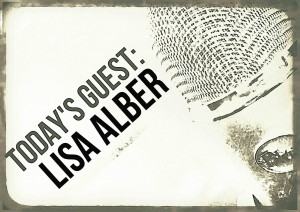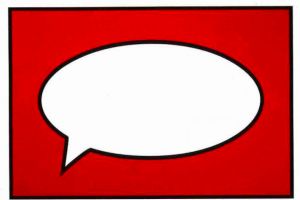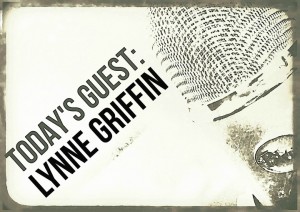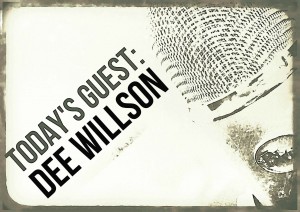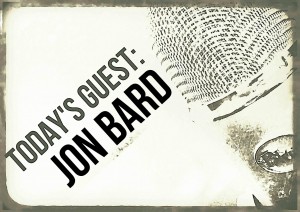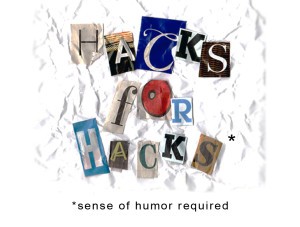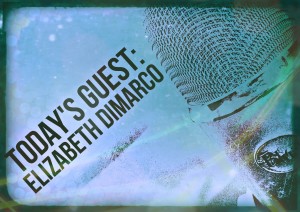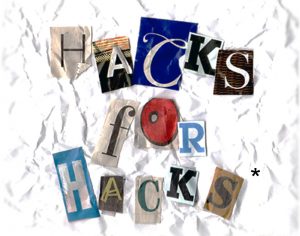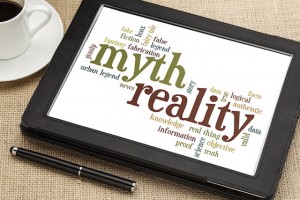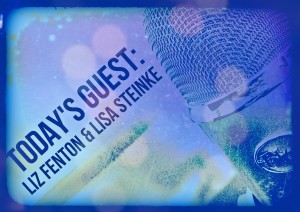Publicity
Our guest today is Lisa Alber, a Hibernophile whose first novel, Kilmoon, was nominated for the Rosebud Award for best first novel. She is the recipient of an Elizabeth George Foundation writing grant and a Walden Fellowship, and was recently included in the bestselling anthology, Eight Mystery Writers You Should Be Reading Now. Lisa lives in Portland, Oregon, but later this month she’s off to Ireland, where she’ll probably drink too much Guinness—all in the name of novel research, of course! Her second novel, Whispers in the Mist (August 2016, Midnight Ink) is available for preorder.
Anything to do with marketing, publicity, and self-promotion can be overwhelming. Most of us would like to be left alone to, well, write. I like to hear other writers’ tales from the promotional jungle, especially when there’s a new idea that might resonate with me and be fun at the same time. We can’t do everything, but it’s good to know what options are out there. Thought I’d share what I’ve recently experienced.
Connect with Lisa on her blog, on Facebook, and on Twitter.
Exploring the Rule of Seven
I have a theory about self-promotion. Namely, that we throw as many things out there as we can—Facebook viritual parties, guest blog posts, bookmarks, and so on—in hopes that something sticks. Please, we say to ourselves, let my name magically propagate through the hoards of readers out there who I know would love my novels.
I’ve heard it said by “experts” that our names don’t stick in readers’ heads until they’ve been exposed to it at least seven times. Seven! I don’t know who these so-called experts are, and I’m convinced that no one knows what truly works at any given time, for any given author, but I’m open-minded. I’m willing to toss my name into the literary grab bag over and over again.
The rule of seven has become official enough to have a Wikipedia page—I kid you not—and an official sounding theory associated with it: “effective frequency.” As with any unprovable theory, this one has caused some controversy. How many exposures constitute the optimally correct number? Is it really seven?
Not long ago, I realized that in the past year, I’d been invited to participate in three joint book promo-y projects, which struck me as interesting and perhaps “a thing” that’s going on at the moment to help us land our optimally correct number of exposures. I call it “hive mind self-promotion.”
So what am I talking about exactly?
Read MoreScenario 1: You’re a writer whose first book is about to be published, and you’ve been inundated with requests for interviews. In the dim and distant days before blogs and online magazines, that meant someone calling you, or goodness, even coming to visit you in person and recording the interview on a little machine. These days, though, the approach is usually made through email, and unless it’s a piece for your local paper (and even then perhaps!) the interview will most likely be conducted in the same medium, and published online. It’s likely you will never meet the interviewer and so you have to impress and interest them purely through the written word. Well, that’s easy, isn’t it? You are a writer after all! And then you get that first interview-and you freeze. Talking too much—or not enough—revealing too much—or revealing too little—striking the right tone—treading a fine line between spontaneity and reflection—showing confidence but not being too pushy: so many things to think about, so much to get right (or wrong).
Scenario 2: You’re a writer, published or unpublished, and you have a blog. You’d love to find out more about the work of fellow writers, and what makes them tick. You come up with a great idea: interviews for your blog. You’ve got quite a few writing contacts already, so you can start with them. Compiling author interviews will be easy. You’re a writer, and a reader. You know just how it should go. Then you start compiling your first set of interview questions, and you panic. What if the author thinks the questions are too bland? Too pushy? Too gushing? Or too impersonal? Should you ask about their life outside of their work or leave that strictly alone? So many things to get right (or wrong)
Author interviews are a fact of the writing life. Whether as interviewee or as interviewer, every author will inevitably have to gain some experience of the art and craft of author interviews. So how do you go about getting that experience?
Read MorePlease welcome Greer Macallister, author of historical suspense (The Magician’s Lie), to Writer Unboxed as a regular contributor! We’re thrilled to have her with us.
My debut novel, The Magician’s Lie, was released in hardcover almost a year ago, on January 13th — the very same day as another debut: Paula Hawkins’ thriller The Girl on the Train.
Since then, The Girl on the Train has sold 4 million copies. The Magician’s Lie… has not.
Why and how does a book catch fire? It certainly helps to have a publisher giving the book a full-court press, as Riverhead did with Girl, but there have been plenty of debut novels positioned just as carefully, and funded just as generously, with nowhere near the results. (If you’ve read The Gargoyle, the ‘It Novel’ of 2008, please raise your hand.)
We all go into this business hoping our book is going to be The One. It almost never is.
We get the luck we get.
Not that I consider myself unlucky. Quite the opposite. While The Magician’s Lie hasn’t sold 4 million copies, it has done quite well — excellent reviews, good sales figures, flattering honors. And it’s passed the ultimate test for most writers: it’s done well enough for my publisher to buy my next book.
Much of that, like much of Paula Hawkins’ success, is luck. It landed on the right person’s desk on the right day. The readers at Target liked it enough to make it a monthly Book Club Pick. The guest judge at Book of the Month chose it as a main selection, and that guest judge happened to be Whoopi Goldberg. If it had come out in a different month, or if there had been different people making these decisions, my luck would have been different. Bad instead of good. Or not even bad, just nonexistent.
Which is why I tell writers: Take your luck. But I also tell them this: make your luck.
There is so much in this business we can’t control. But there are certain things we can. We can make each book the best it can be. We can seek the advice of experts and build the right team — everyone from agents and editors to beta readers and booksellers — to get a very good book into the hands of as many people as possible.
And if good luck comes your way, you have to help build on it. Tackle the edits. Do the interviews. Move heaven and earth to go on the tour. Spread the word any way you can. Say yes, say yes, say yes.
Four-leaf clovers, like anything else green, die without water.
Read MoreYour manuscript is finished and the agent submissions checklist is all set:
Or perhaps you’ve decided to self-publish and everything’s ready, including a cover designed around a gorgeous image you’ve found that perfectly captures the spirit of your book.
It’s time to pull the trigger.
But wait. Isn’t something missing?
If either your querying materials or your self-published cover do not include blurbs, then yes: something’s missing. Something you absolutely can’t proceed without.
Quick primer in case you’re not familiar with this quirky term:
A “blurb” is that little snippet of praise from another author or a reviewer brandishing a book’s cover. Think, “Immensely readable. From small town to the grit of the city, family farm to union factories, the Midwest of Michelle Hoover’s Bottomland is alive with secrets, hard choices, and the acute costs of independence.” —Daphne Kalotay, author of Russian Winter and Sight Reading
Or, “Half in Love With Death is a suspenseful psychological thriller and a mesmerizing coming of age story. I raced to find out what happened, yet longed to linger with this rich cast of characters and Emily Ross’s stylish prose. This haunting story of a teen girl’s search for her missing sister, served up with plenty of plot twists, will excite YA mystery fans.” —Diana Renn, author of Tokyo Heist, Latitude Zero and Blue Voyage
These well-crafted snippets not only showcase readers’ praise of a book, but they also serve a very important purpose long before a book is marketed or promoted:
At every phase of the game, blurbs offer a crucial layer of vetting.
In an industry where where no specialized training or prior experience is required to go knocking on agents’ or editors’ doors, blurbs help distinguish those writers who’ve done their homework by seeking critiques from others more experienced than themselves. They also demonstrate that a manuscript has gone through the requisite rounds of revisions and rewriting and is at the point where a published author can read it start to finish and approve.
Read MoreOur guest today is Lynne Griffin, author of the family-focused novels Girl Sent Away, Sea Escape, and Life Without Summer, as well as the nonfiction parenting guides Let’s Talk About It: Adolescent Mental Health and Negotiation Generation—Take Back Your Parental Authority Without Punishment. Lynne is a counselor who teaches family studies at Wheelock College, and she is the Social-Emotional Learning Specialist and Coordinator of Parent and Professional Programs for an independent school in Boston. She teaches fiction writing at GrubStreet in Boston and facilitates their program for soon-to-be published authors called Launch Lab.
Whether you’re closing in on a final draft or about to launch your novel, you will need clarity about what makes your novel stand out from other fiction on the market.
Connect with Lynne on Twitter, on Facebook, and on her website.
Standing Out on the Crowded Shelf—How to Help Your Fiction Find an Audience
For the novelist, the first introduction to the concept of the “crowded shelf” usually comes in the form of a rejection letter. I don’t know a writer who hasn’t been told that their story simply won’t stand apart from other works of fiction on the market. Yet even when you find your champion—the agent or editor who believes in your story enough to bet on it—you’ll still be asked to play a leading role in positioning your novel for discoverability.
Likely you’ve heard writers lament about the high expectations publishers have for today’s author, to participate in (or some cases own) the publicity and marketing efforts related to their novel. Very few writers can pull a Salinger or a Ferrante, getting away without promoting their work at all. But instead of focusing on the good ole days of publishing, when someone other than you lined up book events or secured interviews and profiles, I urge you to turn your attention to the things you can do to position your novel to stand out and find an audience.
Your Intent
Begin by reflecting on your top two or three goals for your novel. Whether you want to entertain or enlighten certain readers or you have something to add to a particular discussion, be sure you have clarity around your intentions. If you don’t know what you’re after, it will be difficult to create a campaign to reach the right readers. For my new novel Girl Sent Away, I knew I had a lot to say about the crisis in our adolescent mental health system. By articulating my mission to create a conversation around building resilience and nurturing empathy—really owning what I had to contribute—I was able to outline my novel’s key themes. Honing my message allowed me to imagine the communities of readers who might be interested in joining the conversation.
Believe it or not, another way to get at your novel’s uniqueness, is to identify its competition.
Read MoreOur guest today is Dee Willson who felt the writer’s call at fifteen, when she penned her first novel and received her first rejection to go with it. Over twenty years later, Dee Willson has published short stories, interviews, contributed to blogs, and wrote the soon-to-be-released novel A Keeper’s Truth. She currently resides in Burlington, Ontario, with her husband and their two daughters.
I find it hard, sometimes, to wear two different hats. I’m often envious of friends who can devote the bulk of their time to their craft, to writing, and sometimes wish I could do the same. But wearing a corporate hat has its advantages, and the vantage points are unique. I’ve learned a lot, and enjoy the prospect of sharing my experience with my friends at Writer Unboxed.
Connect with Dee on her blog and on Twitter.
Two Hats, One Woman
In the Writer Unboxed universe, I wear a bright yellow hat. It’s fringed and funky and doesn’t match my corporate attire, but it’s ME, if you know what I mean. It’s my writer hat, the one that screams in bold, has my heart embroidered on the brim, and makes the sun shine on the dreariest of days. I love this hat.
I also have a grey hat. It fits well—all prim and proper—at home in the corporate boardroom. In it I feel professional, experienced, a woman with a head for industry on a large retail scale. I love this hat, too.
Two hats, one woman.
What does this mean in regard to writing? Well, it means my path to publication came with two hats and no dress-up instructions. And believe me, the combination is not always pretty, but I’ve learned a few things from each. I’ll use the four P’s of marketing to bring things into focus.
Product
Seven years ago, when I first donned by funky yellow hat, I sat at my computer and let a story pour out. It was a ten-week whirlwind that had me laughing, crying, dancing in the streets, and when it was over, I had A Keeper’s Truth, my first novel. The feeling was exhilarating, and I cherished this yellow hat like no other.
Read More
“Dear publicist, My book just released and I’d like to promote it. How can you help?”
“Hi! My novel came out last fall and sales have been close to zero. Can we talk about what your firm can do to promote it?”
Ouch! These emails break my heart.
I typically get about two like this a day asking for help with a book that has already released. Or is releasing next week. Or tomorrow. Sadly, in those cases there’s a lot less I can do than I could have two or three months earlier.
That’s because the work of getting a book onto the radar screen of people in the media who will review it, blog about it or interview its author must absolutely begin well in advance of publication.
I know it sounds counterintuitive: at long last a book has hit the market, it’s time to tell the world! But in fact, this is a far cry from how things work on the back end.
To understand why, we need to get inside the minds of the people on the back end — those who will be writing those reviews, conducting those interviews or publishing your blog posts. In order to even consider a book for coverage, the person doing so usually needs to read first, and then craft a thoughtful news item about it — whether that’s a review, a feature story or an author Q&A. He or she will also have to get the news item approved and possibly revised by an editor, who’s equally swamped and running chronically behind. And chances are, said person already has a pile of about 20 other books to read or consider first. It’s not unlike the process agents go through where their slush piles just keep growing but there are only so many hours in a day.
Yet this is completely at odds with the imperatives of organizations offering coverage such as magazines, newspapers, radio stations and sites like The Huffington Post. These organizations are news outlets. So are may blogs, including book blogs. By definition, news is information about what’s new. Take a look at your daily newsfeed, or turn on the evening TV news: each article or story contains information or commentary relevant in some way to an event that has taken place that very day, or to one that took place very recently and is still being buzzed about. So news outlets have to give priority to what’s new or timely.
Read MoreWarning: Hacks for Hacks tips may have harmful side effects on your writing career, and should not be used by minors, adults, writers, poets, scribes, scriveners, journalists, or anybody.
Here’s the good news. You’ve sold your book! The bad news: Your publisher needs a photo of you for the jacket. Now before you get mad that I’m calling you ugly, rest assured I’m not. All I’m saying is that you’re an incompetent photographer who doesn’t know the difference between focus and an F-stop (or whether that analogy I just made even uses real photo terminology).
I talked briefly about author photos before, but now I’m sharing the primo tips that’ll mean the difference between looking like a successful famous author, or some poseur who ironed some elbow patches onto a thrift-store suit jacket.
[pullquote]Any reputable photographer should be able to guarantee you’ll get some action as a result of this photo.[/pullquote]
What is an Author Photo?
Let’s start with why we’re going through this rigmarole. An author photo is a selling tool designed to let your fans know what you look like so they can properly throw themselves at you when they see you. To do that, you’ll need to…
Hire a Photographer
No, that blurry selfie you use for your Twitter avatar isn’t going to cut it. It’s time to go to a professional. That means someone with AT MINIMUM 500 followers on Instagram. This will not come cheap, but it’ll be the best twenty-bucks-plus-a-case-of-Pabst you’ll ever spend.
[pullquote]It’s time to go to a professional. Look for someone who has AT MINIMUM 1,000 followers on Instagram.[/pullquote]
Any reputable photographer should be able to guarantee you’ll get some action as a result of this photo. Ask them about this specifically.
Set the Mood
The best time to take a photo is during the “magic hour”–the time just before sunset, when the light is redder, softer, and more flattering. Basically, around happy hour. Knock back a couple brewskis in during the shoot to turn yourself from a dour, desperate, struggling writer into a delightfully eccentric raconteur.
Read MoreToday please welcome return guest Jenny Milchman.” Jenny’s new novel, As Night Falls, will be released tomorrow. She is also the author of Cover of Snow, which won the Mary Higgins Clark Award, and Ruin Falls, an Indie Next Pick and a Top Ten of 2014 by Suspense Magazine. She is Vice President of Author Programming for International Thriller Writers, teaches for New York Writers Workshop, and is the founder and organizer of Take Your Child to a Bookstore Day, which is celebrated annually in all fifty states. Jenny lives with her family in New York’s Hudson River Valley.
In 2013, Shelf Awareness dubbed my book tour “the world’s longest.” Of the first two years I was a published author, eleven months were spent on the road, visiting bookstores, libraries, book clubs, schools. Now I’d like to help other writers add this kind of richness to their careers by getting out there face-to-face in an increasingly virtual world–oh, and you don’t have to rent out your house, trade in two cars for an SUV that can handle Denver in February, or “car-school” your children to do it.
** Special for Writer Unboxed Readers! Today is the last day of a giveaway for anyone who pre-orders Jenny’s forthcoming thriller, As Night Falls. You’ll be eligible to win a Writer’s Wish List, or give one away to an emerging writer in your life. Click HERE for details.
Connect with Jenny on her blog, on Facebook, and on Twitter.
The World’s Longest Book Tour
Or, Why I Rented Out My House, Traded in Two Cars for an SUV That Could Handle Denver in February, and Hit the Road With My Husband and Kids
When Therese graciously agreed to let me appear on WU, she asked two questions about my book touring. (I’ve spent 11 of the past 24 months on the road, putting 70,000 miles on the above mentioned SUV. Now with my third novel set to release, we are heading out again.)
Therese wanted to know whether I do it all myself. And, how I manage not to lose my mind.
Well, assuming she’s right about the not losing my mind part—and some would say that’s a reach—I do have some ideas as to how to keep a hold of your sanity on tour. But it might be better to talk first about why I do this, and whether a scaled down version could work for you.
Read More
Warning: Hacks for Hacks tips may have harmful side effects on your writing career, and should not be used by minors, adults, writers, poets, scribes, scriveners, journalists, or anybody.
Your career is taking off–someone asked you to blurb their book! Yes, you! No, I can’t believe it either! I mean, out of all the authors available who have better sales and a bigger following and…well anyway, they picked you, so nice job.
This is a big opportunity. Blurbing a book lets you seize a chunk of someone else’s life’s work and make it all about you. Furthermore, if people are asking you for an endorsement, you’re now a tastemaker, subtly steering the zeitgeist toward works of true literary quality. The resemblance of said works to your own books is purely coincidental.
Like any important endeavor, there’s the distinct possibility you might screw it up, thereby trashing not only your own career, but that of a fellow author whose only crime was believing in you. Not sure what to do next? Aren’t you lucky you have me to tell you!
[pullquote]Blurbing a book you haven’t read would be unthinkable, even though it would be impossible to prove, and you’d face no consequences whatsoever. Oh yes, you’ll definitely read every word.[/pullquote]
Step 1: Agree to Blurb Every Book You Possibly Can
Remember when you were desperately begging every author you’d ever met to say just one nice thing about your novel? Just one?! Don’t make other writers go through that. You can be sure that if someone’s asking you for a blurb, they’ve already been turned down by half the RWA. When you come across an author who’s so, shall we say, highly motivated, you can ask for a few perks. I don’t mean anything fancy, just get the author to promise that your blurb will appear before any other author’s on the jacket. You’re doing them a favor, after all, so it wouldn’t kill them to work with you a little, amirite? No need to be pushy, but don’t be bashful either; with the right combination of charm and passive aggression, they’ll let you pick the font and weigh in on the cover design.
Step 2: Read the Book
Now that the author has agreed to your demands, it’s time to read the book. This is of utmost importance, because who would ever blurb a book they haven’t read? It’s unthinkable, even though such a thing would be impossible to prove, and even if it wasn’t, the offender would face no consequences whatsoever. Oh yes, you’ll definitely read every word.
Read MoreIf you’re thinking of hiring a publicist, one of the first questions you’re likely to ask is:
“Do you have good contacts?”
Authors ask me this every day. While it would be easy for me to say, “Of course!” (and to add with a glint in my eye, “if you just sign on this dotted line,you’ll see…”) it would be misleading. Not because I don’t have contacts. Rather, because the very notion that contacts will lead to media placements is a great big myth it’s time to dispel.
Think about it. Our press corps is immense. Far beyond book reviewers, there are bloggers and producers and editors and staff writers covering every topic under the sun from food and travel to fashion, psychology, money, health and gardening — even adhesives. Seriously. My Vocus media database boasts an archive of 1.6 million media contacts and growing.
Like most PR pros, my work, too, spans a wide range of topics. I’ve promoted everything from business books to crime novels and literary fiction. While publicizing Alden Jones’ dazzling travel memoir The Blind Masseuse, I reached out to reporters covering travel and specific Latin American countries. For Lisa Borders’ literary novel The Fifty First State set in southern New Jersey, I was in touch with — you’ve got it — the South Jersey press. (Yes, there is such a thing.) While working on Ashley Warner’s rape memoir The Year After I dug up names of reporters who focus on women’s health. I also figured out who happened to be producing news about the college campus sexual assault stories that were making headlines at the time. The list goes on and on.
Can anybody possibly know all these contacts? Absolutely not. That’s what databases are for. Besides, the media is notorious for high turnover. A great contact who’s here today could very well be gone the next.
Instead, what a good publicist knows is how to find the news angle in any given book or project. Because the single most important factor in garnering coverage is the story itself. Reporters, reviewers, bloggers, producers and news editors are all looking for specific types of news stories presented in fairly specific ways. Mining those stories from each given book and each author’s personal history
Read More
